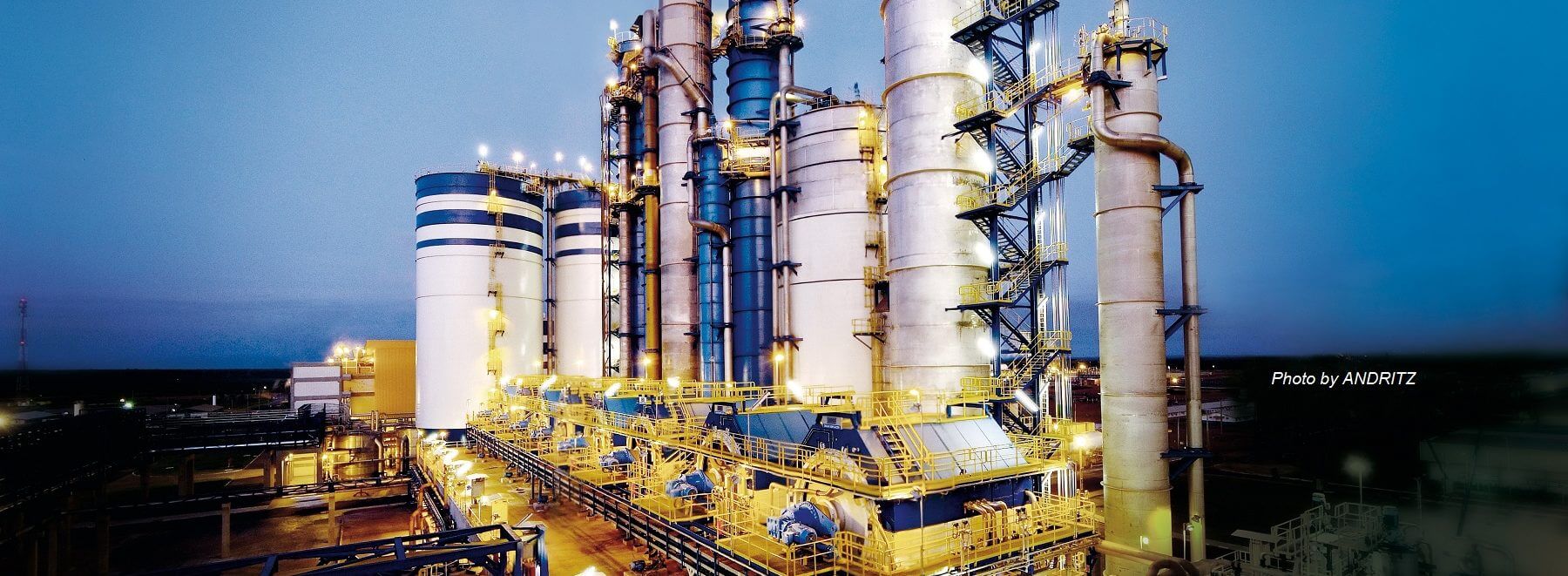Evaporation
When the diluted black liquor leaves the washing section it contains about 15% dry substances (ds). The evaporation process must increase the dryness to at least 60% in order to make it combustible. This process is referred to as evaporation.
Through a series of evaporators – basically heat exchangers – which operate at progressively lower pressure, the steam from one stage is used to heat the next stage by condensing there. Normally evaporation takes place in six or seven stages, often called effects. Live steam at pressure enters the first effect. The pressure and temperature drops from effect to effect. In the example opposite, the weak black liquor is pumped into the fourth effect and the thick black liquor is removed from the first.
The condensate from the first effect is clean and goes back to the boiler feed water tank. The condensate from the other stages can be used in other parts of the process as e.g. wash water. Non-condensable gases are removed and are extracted and burnt.
The weak black liquor contains rosin soap, which should be separated and recovered for production of tall oil – a raw product for the chemical industry.
Examples of NAF valves used in this process
- NAF Setball V-port ball sector valve – Black liquor control applications with consistency <85%, live steam condensate, MP steam to effect, water to desuperheating effect
- NAF Duball DL full bore ball valve – Black liquor applications with consistency <75% (on/off and control)
- NAF Torex triple offset butterfly valve – Black liquor applications with consistency <45%, LP steam to effect
- NAF Turnex pneumatic actuator- For all control and on/off service on NAF rotary valve
- NAF Check- General service check valve service for steam and black liquor lines
- NAF Triball– Drain valves, sampling valves
- NAF Serie 48 gate valve- Any tank service




